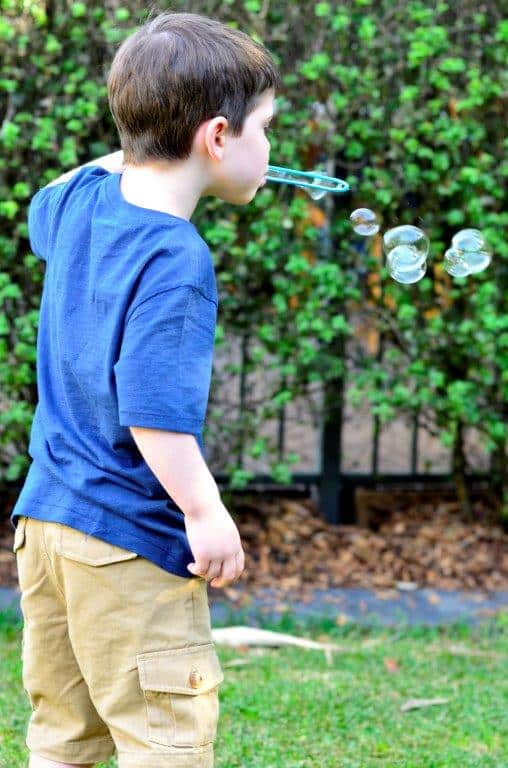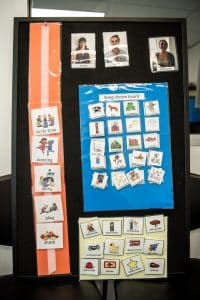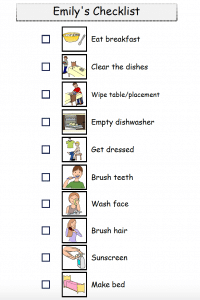
02 Aug Using Visual schedules

Using visual schedules
Have you ever wondered about using visual schedules with your child? Here are some timps for getting started.
I often get asked by both parents and other therapists ‘How can I get my child/client to participate?’ If you wonder this too, keep reading 🙂 I think I’ve got a good solution!
As much as we’d love to focus the whole day doing only the things we like to do, the reality is that sometimes we need to do things we don’t like doing. For me, it’s writing reports – a necessary, but, at times, tedious evil. So what do I do? Well, usually, I will set aside a small bit of time in my calendar- say an hour or so – to get started on the report. After this hour, I will schedule something preferred – perhaps a break with a cup of tea and 15 minutes of Netflix. I find, though, that once I get started, I often don’t stop after that hour. I find that writing the report isn’t actually that bad. But, I still indulge in a cuppa and some Netflix when I’m done.
Visual schedules are useful for children with difficulties with transitions, waiting or completing non-preferred activities. It helps children know what’s coming up, anticipate the onset of non-preferred activities as well as the termination of preferred activities. Finally, they are magical for building independent engagement.
I use visual schedules for myself, my children and my clients. Visual schedules can take many different forms. When my children were young we used pictures. Now they are older, we use written schedules. I was reminded of exactly how helpful schedules can be over the homeschooling period with COVID-19. I think my husband and I would have lost the plot if it weren’t for our trusty whiteboard and texter laying out the order of events and tasks to be completed for my son.
If I had to pick one skill to teach parents, it would be to effectively use schedules to structure the day. With the ever looming possibility of homeschooling, scheduling is possibly going to a lifesaver.

Here are my top tips for introducing a visual or written schedule.
- Identify the format of your visual schedule. Some ideas:
-
-
- A pre-printed checklist of activities that need to be completed during a certain time each day, e.g. a morning checklist. This best if the same activities occur each day and no flexibility is needed.
- A laminated page with a Velcro strip for activities. Pictures can be flexibly added to the schedule as needed. You can also include a ‘finished’ area to move pictures to when activities are finished.
- A first then board for two activities (typically a non-preferred followed by a preferred)
- A white board for a written checklist or a drawn checklist (depending on your artistry skills ☺) This is an easy to implement option and has the added advantage that your child can ‘wipe’ away the activity when it’s finished. Soooo satisfying.
- Identify some preferred activities, i.e. activities your child enjoys and will always reliably engage in. Create photos/pictures/symbols representing each of these activities. Google images is a great resource for these pictures.
- Identify some less preferred activities, i.e. activities your child doesn’t enjoy and/or avoids. Create photos/pictures/ symbols representing each of these activities.
- Start small. When first implementing a visual schedule, start with a specific, short part of your day, e.g. morning routine or a short independent play routine. This allows you to try the new process and tweak it before rolling it out across the day.
- When planning your schedule, preferred and non-preferred activities should be interspersed such that a preferred activity always follows a non-preferred activity. When first starting out, make the non- preferred activities short and easy so your child experiences success.
- FIRST: Pack your puzzle away
- THEN: 5 minutes on the trampoline.
- You can increase the amount of time spent on the first activity and decrease time on second activity as your child builds up success.
- Where possible, involve your child with setting up their schedule. Offer them choices of preferred activities, and if possible allow them to choose the order in which they’d like to do the non-preferred activities.
- Assist your child in completing the non-preferred activities on the schedule. When they do (even if they need help) allow them to do the preferred activity.
- When your child is easily completing one non-preferred/one preferred activity, you can include two non-preferred/one preferred, then three…
- Make sure that your child is successful- if they start to refuse or complain, reduce number and/or difficulty of activities again.
- Encourage your child to manage/follow their own schedule as much as possible (rather than needing an adult to support them all the time).
- For open ended activities (e.g. screen time, playdoh, outside) – use timers to time the amount of time your child can assess an activity. When the timer goes off, that activity is finished.
- Provide lots of praise and encouragement for completing any activities without refusing/whingeing or other behaviours.
- Note: The above strategy can also be used to increase children playing by themselves (the ‘non-preferred’ part) while you play with a sibling, make a phone call, chat to your partner or have a cup of tea.
-
For a downloadable version of this tip sheet, please click here.


No Comments